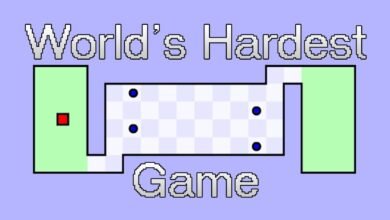
Bionic Bay: A Physics-Based Adventure Game Experience
In the ever-growing world of indie games, few titles stand out mechanically and artistically. Bionic Bay is one such rare gem. Set in a minimalist and atmospheric world, this physics-based platformer offers a rotation on movement, logic, and interaction. Bionic Bay’s unorthodox mechanics and gameplay welcome players to a universe where every step made needs consideration, precision, and readiness to change.
What Makes Bionic Bay Different?
Bionic Bay incorporates real-life rules to shift the traditional norm in platformers that rely on fixed mechanics and repetitive level designs. In contrast to other platformers, Bionic Bay uses every action as momentum, gravity, and the way objects interact with one another—this uniqueness of Bionic Bay forms refreshing encounters in each interaction.
The Core Mechanic: Object Swapping
Receiving Center attention, the mechanics of switching places with objects within the game are equally fascinating. This ‘swap’ feature is less straightforward than it may seem. It is the basis for every problem and forms the crux of every challenge. To progress, players must analyze the space, be attentive to various objects, and execute calculated swaps to advance. Avoiding traps, accessing higher grounds, or even puzzle solving, this mechanic turns problem-solving into an exercise to unleash creativity.
A Silent World That Speaks Through Its Design
Bionic Bay doesn’t rely on dialogue, narration, or written lore to tell its story. Instead, its world design creates an emotional atmosphere. The stark contrast between organic movement and mechanical surroundings evokes a sense of solitude and mystery.
Visual Storytelling Through Environment
The setting for each level of the game seems to be set in a broken,<decaying, and dystopian world that is losing life by the second. Elements such as decaying lights alongside machinery that has long lost its purpose add the final touches to a world that has once exploded with potential. Players are left to interpret the story independently, making the journey feel personal and emotionally engaging.
Mind Meets Reflex: Blending Puzzle and Precision
The seamless blend of thoughtful design and real-time action elevates Bionic Bay beyond a simple platformer. It challenges players to react quickly and think several steps ahead.

Every Challenge Has Multiple Paths
Rather than forcing a single solution, each scenario offers creative flexibility. Players might swing, bounce, or swap their way across the same area in entirely different ways. This variety ensures no two playthroughs are the same, encouraging replayability and experimentation.
Simplicity That Encourages Mastery
One of Bionic Bay’s most compelling aspects is its refusal to overload players with complicated controls or flashy upgrades. The beauty of its design lies in its ability to do more with less.
Learning by Doing
There are no lengthy tutorials or excessive guidance. Players learn the game’s rhythm through trial, error, and success. Each failure becomes a stepping stone, and every success feels genuinely earned. The learning curve is natural, pushing players to become better rather than just stronger.
Real Physics, Real Consequences
Where most platform games treat physics as background logic, Bionic Bay brings it to the foreground. Movement, object mass, and impact force are critical in unfolding each moment.
Dynamic Interactions That Feel Natural
Swapping with a falling object, for instance, can propel the player upward. Timing a swap during motion can cause unexpected reactions that open new paths or create chaos. These interactions aren’t scripted; they result from real-time physics playing out cleverly, keeping the gameplay fresh and engaging.
Designed for the Player Who Thinks Differently
Not every player wants a game that holds their hand. Bionic Bay respects the intelligence of its audience, trusting them to explore, fail, learn, and improve. It rewards curiosity, experimentation, and persistence.
No Hand-Holding—Just Pure Discovery
Without on-screen arrows or blinking indicators, players are left to observe and interpret their environment. The satisfaction comes from realizing how the game world works and mastering it through patience and observation. It’s a mental journey as much as a physical one.
Artistic Minimalism With a Purpose
Regarding the visuals, Bionic Bay adopts minimalism as an aesthetic choice and a way to concentrate attention. The environment lacks clutter yet contains enough detail to capture the eye, inviting player engagement without chaos.
Mood-Driven Design
This game’s lighting, shadows, and contrast convey mood and tension. Gentle machinery sounds like clanks and drones and thus adds to the visual atmosphere. Nothing is random; every element exists to enhance the player’s experience.
Community, Creativity, and Potential Longevity
Despite being a single-player experience, Bionic Bay is a game that could inspire a fantastic community. Its open-ended systems and self-directed puzzling make collaborating on and sharing strategies, tips, and creative playthroughs easy.
Designed for Experimenters and Speedrunners
Players who enjoy maximizing game mechanics will have a lot to work with. Unconventional shortcuts and daring moves stand to reason, and the game is flexible enough to encourage community challenges and speedrun races. Every frame is critical, and every interaction with objects presents an opportunity to uncover something new.
A Game That Dares to Be Different
Bionic Bay stands apart by embracing the unknown in a gaming landscape where many titles follow the same formula. It refuses to rely on nostalgia, flashy effects, or cheap rewards. Instead, it builds a unique identity through carefully crafted mechanics and thoughtful design.
Suppose you are a fan of puzzle-type games and are looking for something different, or you would like to try out a fresh challenge as a platformer enthusiast. In that case, Bionic Bay will surely provide you with an unparalleled experience. It’s not simply an end goal; it is comprehending the process and redefining the constraints while executing it.




